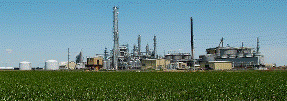Biological Systems Engineering, Department of
Document Type
Article
Date of this Version
1-2019
Citation
Published in Agronomy Journal 111 (2019), pp 49–58.
doi 10.2134/agronj2018.02.0086
Abstract
Crop residue is an abundant resource for the potential production of biofuels, but a better understanding of its use on net carbon emissions must be developed to mitigate climate change. This analysis combines two established crop growth models (Hybrid-Maize and SoySim) with a simple soil and crop residue respiration model to estimate daily ecosystem respiration (ERe) from maize and soybean; ERe was estimated to be the sum of CO2 emissions from the oxidation of the growing crop, crop residue, and soil organic carbon (SOC). Model-estimated CO2 fluxes from irrigated continuous maize and irrigated maize–soybean cropping systems in eastern Nebraska were compared with tower eddy covariance measurements of CO2 fluxes from 2001 to 2010 from those fields. Modeled C emissions closely estimated measured seasonal patterns of CO2 dynamics and measured daily ERe (R2: 0.87, 0.84). Measured and modeled annual ERe values were also compared and better agreement was found in maize compared to soybean. As there are limited comparisons of modeled soil emissions with eddy covariance measured CO2 fluxes, this study is important for the validation of these types of models and to support their potential use in quantifying emissions from crop residue for biofuels.
Included in
Atmospheric Sciences Commons, Bioresource and Agricultural Engineering Commons, Climate Commons, Environmental Indicators and Impact Assessment Commons, Natural Resources Management and Policy Commons, Other Civil and Environmental Engineering Commons, Other Earth Sciences Commons, Other Environmental Sciences Commons



Comments
Copyright © 2018 by the American Society of Agronomy. Used by permission.